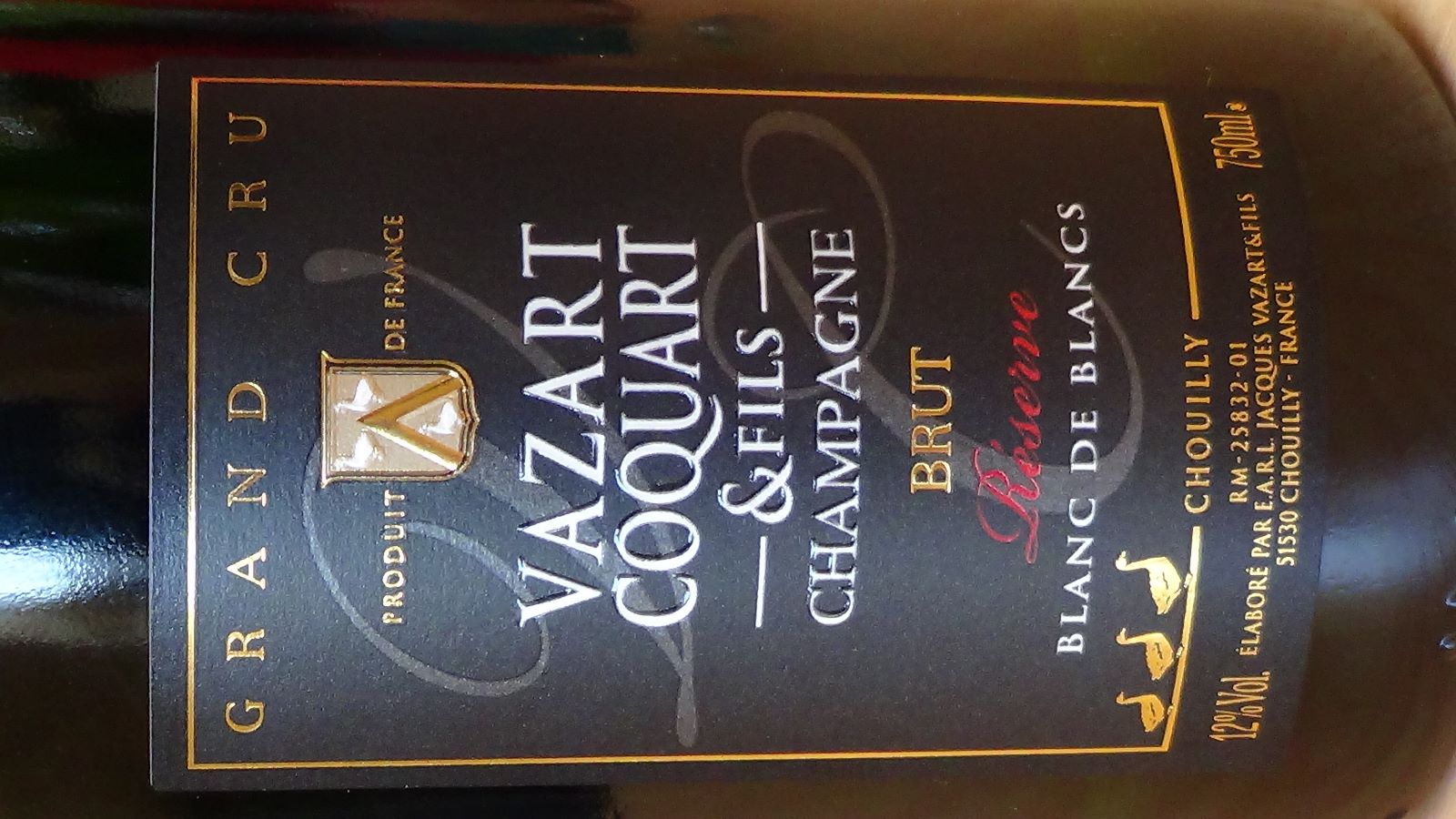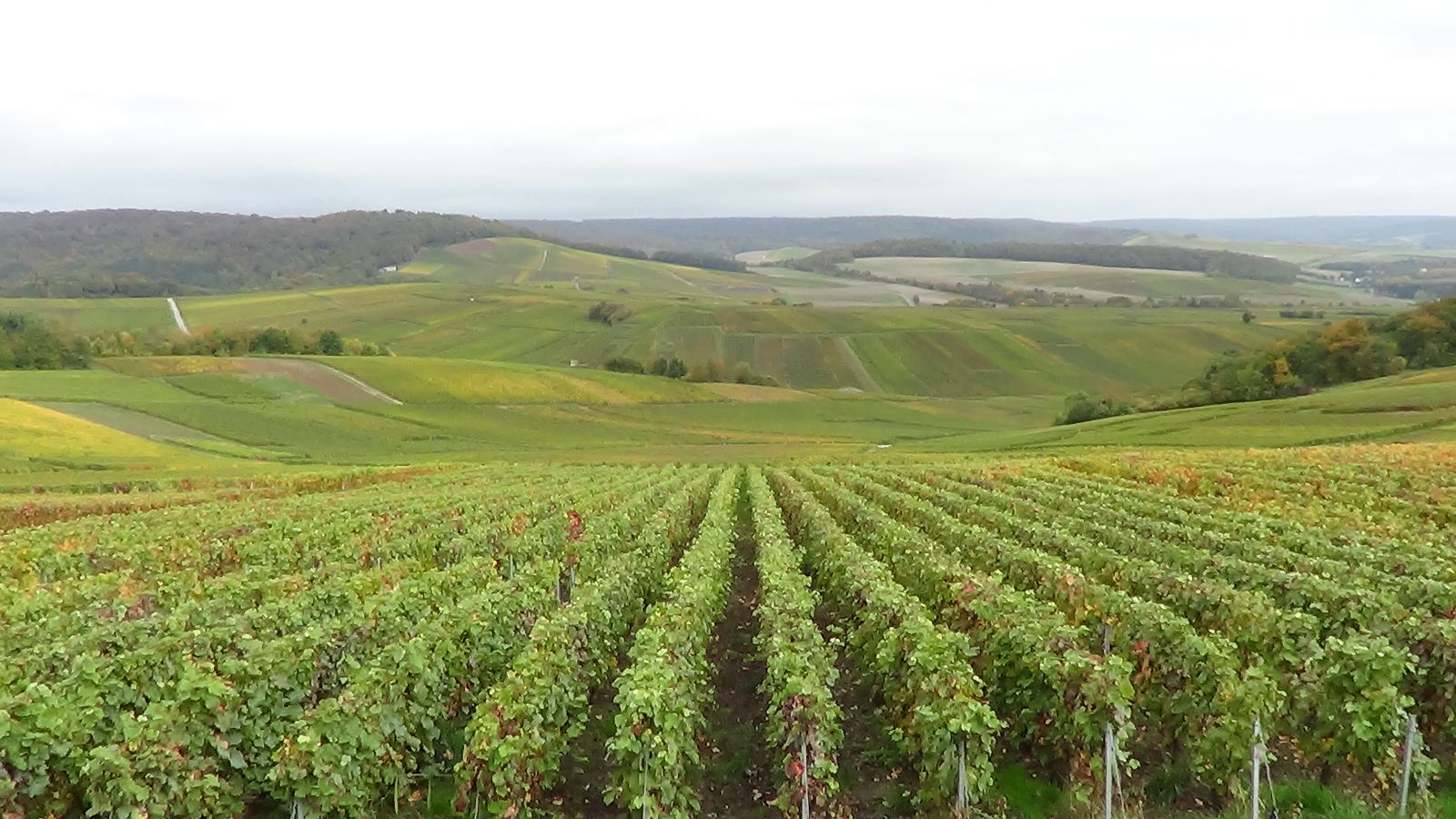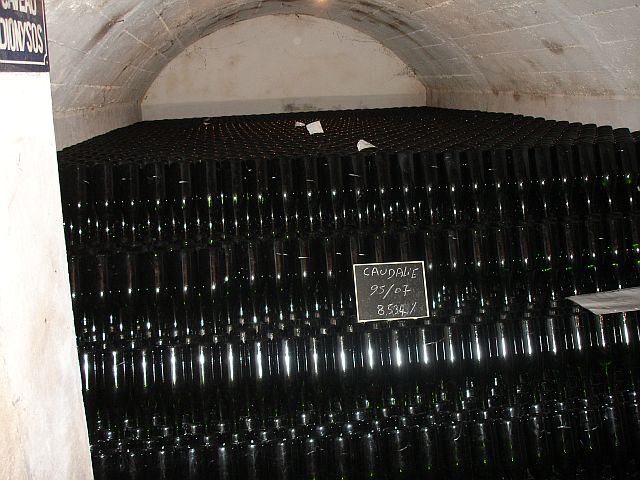
CHAMPAGNE BULLETIN MAY 2023
Changes to labelling regulations
 Those of you who are already working with me on a private brand project will have heard me refer to forthcoming changes to legislation regarding labelling in the European Union and I can now give you a few more details.
Those of you who are already working with me on a private brand project will have heard me refer to forthcoming changes to legislation regarding labelling in the European Union and I can now give you a few more details.
From December this year additional information, including a list of ingredients, will have to be shown somewhere on the bottles; usually this is on a back label.
To many this new legislation seems very onerous and it has caused much debate in the wine trade with many actors questioning whether consumers actually want or understand this degree information, not to mention the practical issue of finding space on the bottle to display this extra information.
Be that as it may, the legislation is set to come into force from 8th December this year and it cannot be ignored by anyone wanted to sell their product in the EU. However, a few concessions have been made for champagne – more on that below.
The list of new requirements is quite lengthy and may seem rather daunting particularly because precise formulae have been given for calculating the various values to be displayed. A few concessions have been granted for champagne which may alleviate any concerns you may have, but first the list of the extra information as far as it concerns champagne
List of ingredients in descending order i.e
Grapes
Sugar content, if added
Concentrated grape juice (if added)
liqueur d’expédition
Other additives
Nutritional value
- Kilocalories and kilojoules per 100 ml
- Fat content
- Saturated fatty acids and other elements such as salt content and protein content per 100 ml
- Energy value in kcal/kJ
There are, however, three factors that mean that there is no need to panic about the new rules:
a) It will be the champagne maker, not the owner of the private brand who will have to carry out the analysis needed to satisfy the new legislation. This is not to say that the brand owner can ignore the new legislation. It simply means that the brand owner should not normally have to carry out the laboratory analysis him or herself. Mind you, the cost incurred by the champagne maker will no doubt be reflected in the sales price to the brand owner.
b) Printers and associated trades, and of course the CIVC, will no doubt be aware of the new legislation and will be able to advise on the finer points of the regulations.
c) The deadline for applying the new rules has been set at 8th December 2023, but the extended ageing time involved in producing champagne has been taken into account so that the regulations will only apply to champagne made after the deadline.
I take this to mean that only champagne bottled after the deadline will be subject to the new rules. In other words, the rules will not apply to any bottles already in the cellars or bottled and put into the cellars before the deadline.
On a lighter note, one champagne commentator has pointed out that the new rules will allow anyone who is interested to calculate the exact number of calories in a bottle or glass of champagne. The answer will vary slightly according to the dosage of the champagne but it’s approximately 72 calories per glass, about the same as a boiled egg, but perhaps more enjoyable!
The price of vineyards in Champagne
 Occasionally clients ask me if it is possible to buy vineyards in Champagne with view to creating a new brand. In theory it is possible although it would not be something I would recommend and if one looks at the annual survey of sales and prices in 2022 the reasons for my hesitation become apparent.
Occasionally clients ask me if it is possible to buy vineyards in Champagne with view to creating a new brand. In theory it is possible although it would not be something I would recommend and if one looks at the annual survey of sales and prices in 2022 the reasons for my hesitation become apparent.
The survey of sales and prices in 2022 shows that the level of activity as well as the prices are on the rise again after a couple of quiet years.
Vineyard plots do come up for sale every year, but they are usually small in size, and you’d need to acquire several plots in order to constitute an estate big enough to produce any serious number of bottles.
According to the report by an organisation called SAFER, there were 960 transactions in 2022 for a total of 220 hectares sold or roughly 0.6% of the total area of Champagne appellation.
That means that the average size of each plot sold was just 0.3 hectares. If you then assume that the average production per hectare is about 10,000 bottles, that translates to about 3,000 bottles per plot sold in 2022.
What’s more, the plots available for sale could be many kilometres from one another which is not ideal in terms of managing the vines.
Then, and most importantly, comes the very high price.
The least expensive plots sold last year were in the Aisne region of Champagne where the average price per plot sold was just 840,000 euros.
Using the rough calculation above you’d be paying 252,000 euros for a 0.3-hectare plot from which you could produce just 3,000 bottles – that’s 84 euros per bottle before you have done anything!
That’s in the least expensive area of Champagne. For a prime plot in one of the most prestigious areas such as La Côte des Blancs, the average price per plot sold last year was 1,659,000 euros per hectare.
Far better to work with an existing champagne maker who already has a substantial vineyard estate or who can buy in grapes at a far more economic price.
However, that is increasingly easier said than done…
Continuing pressure on supplies
 As many readers will be aware from my recent Champagne Bulletins, two small harvests in 2020 and 2021 followed in 2022 by a far bigger increase in demand than was expected has put huge pressure on stocks of champagne. Many houses are having to choose between, on the one hand, putting all their customers on allocation in order to supply all of them with something or, on the other hand, ranking their customers and ceasing supplies altogether to the ones they consider least important.
As many readers will be aware from my recent Champagne Bulletins, two small harvests in 2020 and 2021 followed in 2022 by a far bigger increase in demand than was expected has put huge pressure on stocks of champagne. Many houses are having to choose between, on the one hand, putting all their customers on allocation in order to supply all of them with something or, on the other hand, ranking their customers and ceasing supplies altogether to the ones they consider least important.
This trend shows little sign of ending in the immediate future as has recently been confirmed by the Champagne brokers association, the SPCVC, whose co-president underlined, at their AGM, that the 325.5 million bottles shipped in 2022 was the third highest on record and that pressure on stocks is still running high and made even stronger by the arrival of new players.
What does this mean for private brands?
There are two aspects to the answer, in my view.
First, on the positive side, the demand for champagne and the fact that there are new brands entering the market reflects the strong attraction of champagne both for consumers around the world and for producers / brand owners who see the current market as offering a good opportunity for premium priced brands and robust sales.
On the other hand, there are fewer champagne makers who have any surplus stock to devote to private brands and many of those that do have stock available prefer to focus on promoting and growing sales of their own brand.
The result is that the search for suppliers of private brand champagne is far more complex than it was just two or three years ago. There are still producers who are interested in this type of project, but unsurprisingly, prices are edging up and the producers are more demanding about who they work with and want to assure themselves of the long-term viability of any new private brand projects.
Opportunities still exist; however, it is even more important than ever for anyone considering launching a private brand to present a solid, well-resourced and well-researched project with a clear strategy and a defined target market.
Light at the end of the tunnel
To finish on a positive note, this is the time of year when the wines from the previous harvest undergo a final tasting before blending and bottling and the buzz about the 2022 vintage is very exciting. The quality is said to be outstanding and there is enough volume to replenish stocks and keep pace with global demand.
Having said this, the champagnes based on the 2022 vintage will not be ready to sell until at least 2025 and probably not until a few years after that.
An easing of the supply issue is on the horizon, but more time and patience is needed before we come out of the woods. Now could be a great time to start working on your future brand plans.
I hope you enjoyed this month’s Champagne Bulletin and I’ll see you again next month.
If you'd like to discuss your own project to create a champagne brand, no matter what stage of planning you have reached, just send me an email to This email address is being protected from spambots. You need JavaScript enabled to view it. and we can arrange a meeting on Zoom.
Finally, a reminder that I have 3 domain names for sale
www.growerchampagnes.com
www.the winequiz.com
www.thefizzquiz.com
If you're interested in any or all of these, please send me an email to This email address is being protected from spambots. You need JavaScript enabled to view it.;
All the best
Jiles
